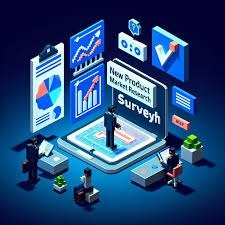Remotely accessing an Android phone secretly may seem excessive, but there are some valid reasons why this would be considered. Parents would prefer to protect their teenagers from the internet, employers would prefer to lock down company information on company phones, or individuals may be concerned about a loved one’s safety.
While Android phones are privacy-friendly, discreet monitoring can be accomplished, but only with software tools specially designed for it. Here, we’ll discuss how remote access is implemented, the tools that facilitate it, and the ethical issues to consider.
Eyezy – The Best Remote Access Solution
If you are looking for how to remotely access an Android phone without knowing, Eyezy is one of the most reliable and secure options out there. Installed on the device you wish to track, it runs silently in the background, allowing you full access to messages, call log, GPS location, social media applications, emails, and even ambient sound.
It’s ideal for individuals who prefer to remotely and secretly access an Android phone without alerting the user and see who someone is talking to on Messenger. Eyezy features an easy-to-use dashboard that displays everything remotely, including screen capture and keyword alerts.
The demo is free, which enables you to experience the interface before making a purchase.
Pros:
- Stealthy and strong
- Simple dashboard to use
- Great customer support
- Versatile monitoring features
Cons:
- Physical access to the target phone is required for installation
- Some operations require rooting the phone
Spynger – Private and Easy Monitoring
Need to remotely access an Android without permission in a way that doesn’t require technical expertise? Spynger is a discreet, lightweight app designed for occasional users. It monitors call log, SMS, GPS location, internet history, and application usage — all to be viewed from a secure command panel.
A great option for those curious about how to access an Android phone from another Android phone without knowing, and for free. Spynger is not entirely free, but it offers affordable prices with essential features.
Although it’s good for general monitoring, it lacks more advanced features like live mic recording and screen recording.
Pros:
- Low learning curve
- Lightweight and stealthy
- Affordable plans
- Covers basic features well
Cons:
- No ambient audio and remote camera access
- Limited messaging app support
FlexiSPY – Advanced Control for Deep Monitoring
FlexiSPY is a capable app for those who want to learn how to remotely access an Android phone without knowing. It offers features like live call monitoring, surroundings recording, remote camera access, and social media activity tracking. With rooting, you can even activate the microphone or camera discreetly.
While it provides deep insights into a device’s usage, it’s not the only app offering such capabilities—Eyezy provides a similar range of features, often with a more user-friendly setup. FlexiSPY is a solid choice, especially for those comfortable with technical steps, but it comes with a premium price tag that might not be necessary for all users.
Pros:
- Live camera and audio control
- Works in a large variety of apps
- Ongoing updates in real-time
Cons:
- Highly priced levels
- Rooting is required for full access
- Challenging for non-tech users
Conclusion
Figuring out how to remotely access an Android phone secretly isn’t just about curiosity — it’s often about safety, security, or responsible oversight. Whether you’re a parent, an employer, or someone looking to protect a loved one, the right tool can make all the difference.
All the tools we observed in this article are top-notch, but Eyezy remains the best choice for its user-friendly interface, powerful features, and seamless experience.
You May Also Like: How iTop VPN Prevents Cyber Threats by Masking Your IP











